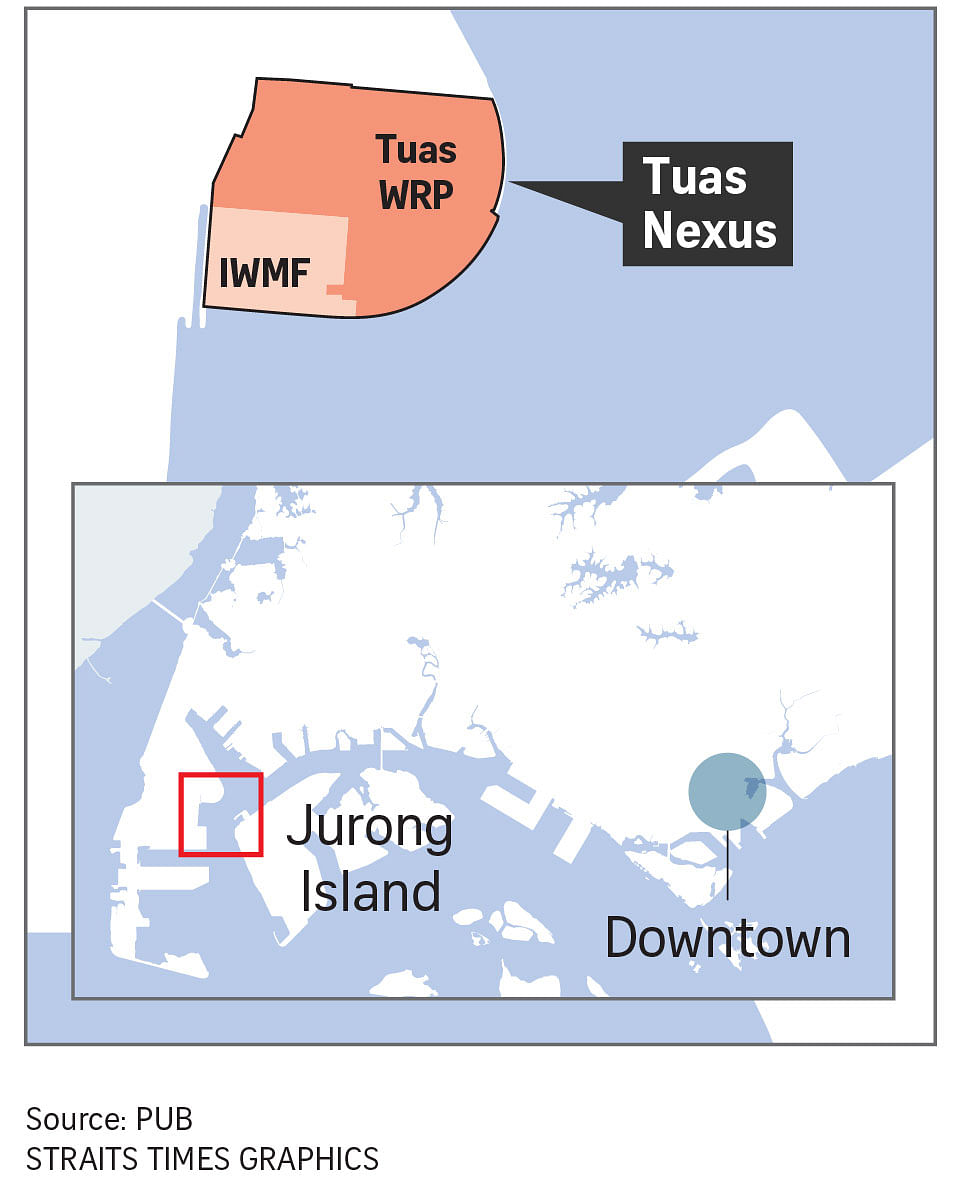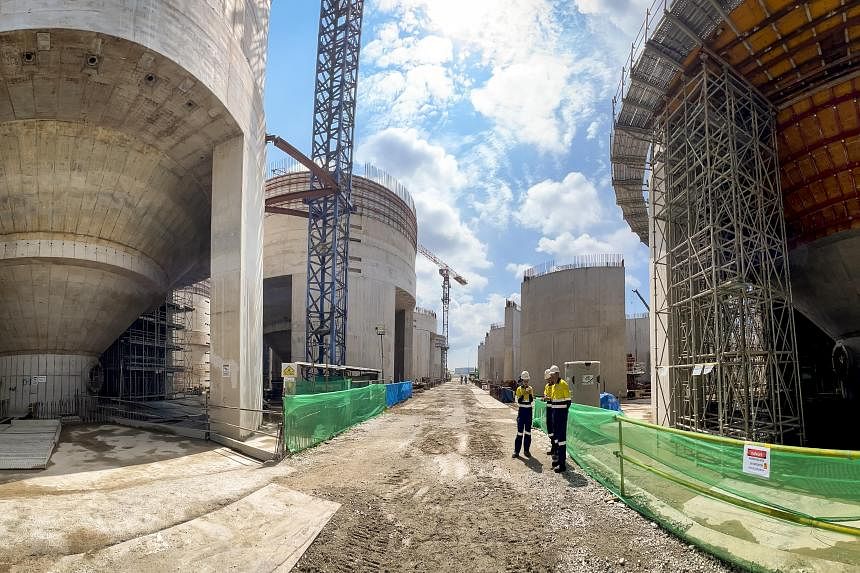SINGAPORE – The Republic is on track to secure more recycled used water from 2026, with about one-third of the Tuas Water Reclamation Plant completed.
Expected to be operational in 2026, the plant can treat 650,000 cubic m of domestic sewage water per day – enough to fill 260 Olympic-sized swimming pools – and 150,000 cubic m of industrial used water.
With the currently operational water reclamation plants in Changi and Kranji, a total of 1.97 million cubic m of used water can be treated each day from 2026, as a start.
Singapore’s current water demand each day is about 1.95 million cubic m, or 440 million gallons. By 2065, demand is expected to almost double.
At the Tuas plant, up to 85 per cent of the domestic used water can be converted into Newater.
However, boosting water security with reclamation and desalination to meet rising demand and prepare for climate change comes, literally, at a price – higher costs.
Singapore’s water prices were last raised in 2017 by 30 per cent, phased over two years.
Since then, the cost of treating and supplying water in Singapore has risen by about 30 per cent, mainly due to rising prices of energy, construction, chemicals and maintenance, said national water agency PUB.
Now, average electricity tariffs have increased by almost 37 per cent, with a hike of around 50 per cent at its peak, due to rising fuel prices, said PUB.
Seawater that has been desalinated is the most energy-intensive of all of Singapore’s water sources – the energy needed to produce such water is thrice that for Newater. The other sources are imported water from Malaysia (up to 250 million gallons a day) and water from local catchments.
Newater and desalinated water are more weather-resilient sources during extreme weather conditions or prolonged drought caused by climate change, but these methods are becoming costlier.
The agency added that construction costs have risen by 35 per cent, chemicals for water treatment by 33 per cent, and manpower and maintenance costs by 18 per cent.
Building water infrastructure in an increasingly urbanised environment is more costly, said PUB, citing how pipeline construction, through less intrusive methods, costs 70 per cent more, from about $10 million per km in 2017 to $17 million per km now.
The $6.5 billion price tag on Phase Two of the Deep Tunnel Sewerage System (DTSS) – an underground tunnel network for domestic sewage and industrial used water from the western and downtown regions – is almost double that of Phase One’s $3.4 billion.
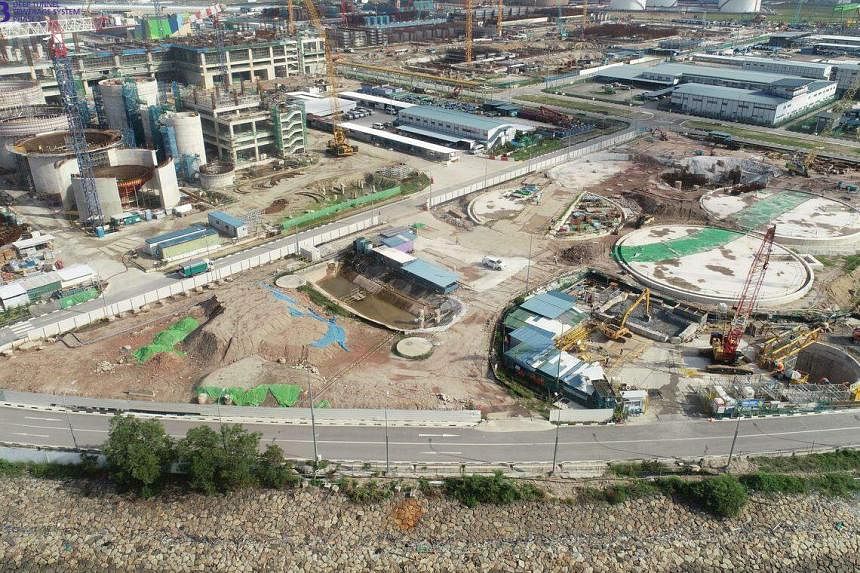
Phase One, which covers homes and businesses from the north to the east, was completed in 2008, channelling used water to the water reclamation plants in Changi and Kranji for treatment.
When the second phase starts operations by 2026, used water will flow via gravity through the tunnels to the Tuas Water Reclamation Plant.
More than $3 billion of Phase Two’s cost went into building the plant, with this amount matching PUB’s spending in the past five years on long-term water supply investments, including the construction of desalination plants, Newater factories and the expansion of its used water infrastructure.
As for the rise in the cost of maintaining Singapore’s water system, Covid-19 and supply chain disruptions have driven increases in manpower costs and the prices of parts, said the agency.
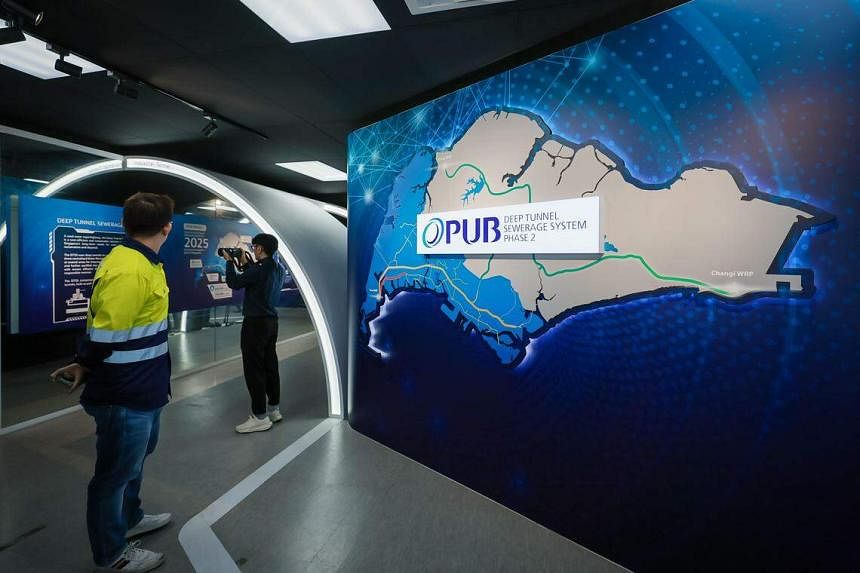
During a media visit to the over 50ha Tuas Water Reclamation Plant on Thursday, PUB explained how it has turned to cost-effective solutions to mitigate the price pressures.
To soften the impact of fuel price hikes, the bulk of the plant’s electricity needs will be provided by biogas generated from used water sludge and food waste from the Integrated Waste Management Facility next door.
The upcoming facility under the National Environment Agency (NEA) and the water reclamation plant will form the Tuas Nexus.
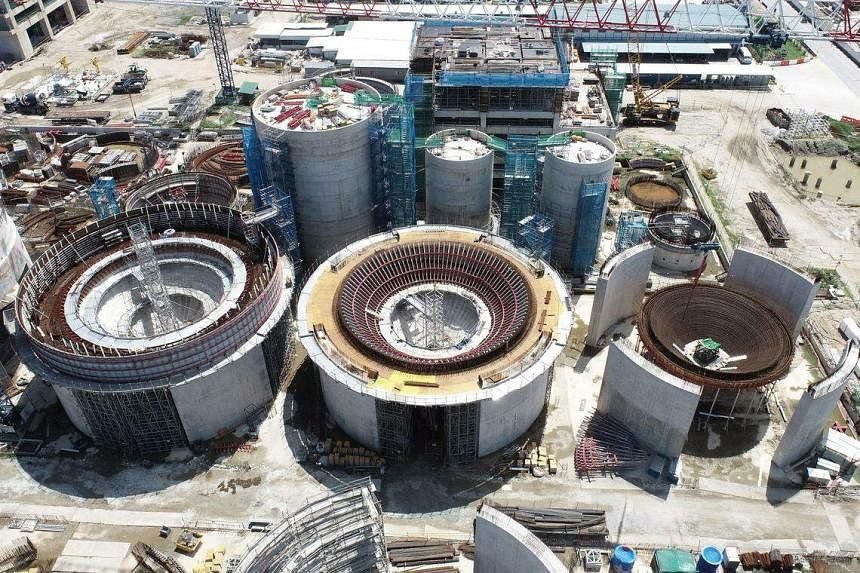
Around 1 per cent to 2 per cent of energy for the water reclamation plant will come from solar panels that cover almost all the plant’s roof spaces.
PUB has also been undertaking intensive research to reduce the energy needed to desalinate seawater, which is currently 3.5 kilowatt-hour (kWh) for 1 cubic m of water. Demo projects have been able to use less than 3.5kWh so far, it added. The aim is to reach below 2kWh by 2025.
To reduce reliance on chemicals, biological treatment will be used to manage odour from the used water and remove the pungent hydrogen sulphide.
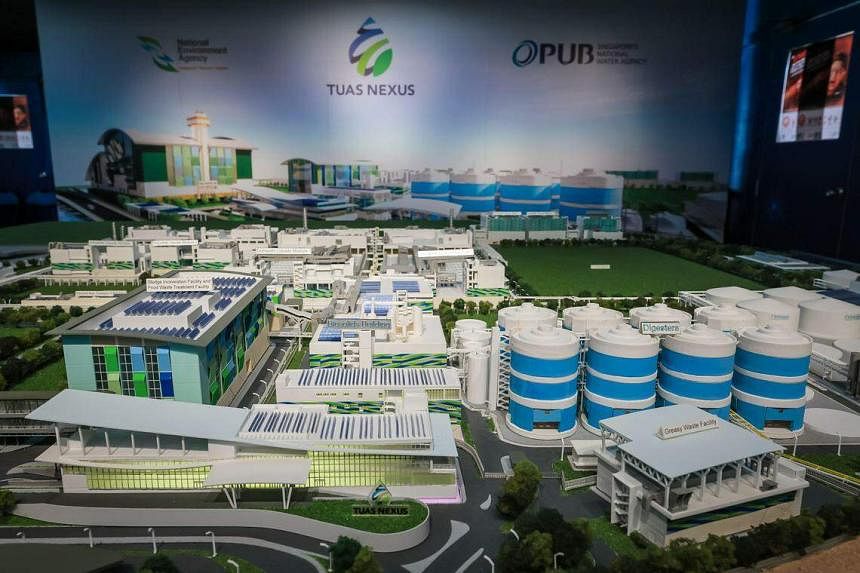
The Tuas plant’s 40m-tall sludge digesters are being built above ground to save on ventilation and maintenance costs. These digesters, which treat sludge, are commonly built underground.
Other features such as the membrane bioreactors – which contain bacteria to break down waste in used water – will not be fully enclosed to allow for natural lighting, thus saving on lighting costs.
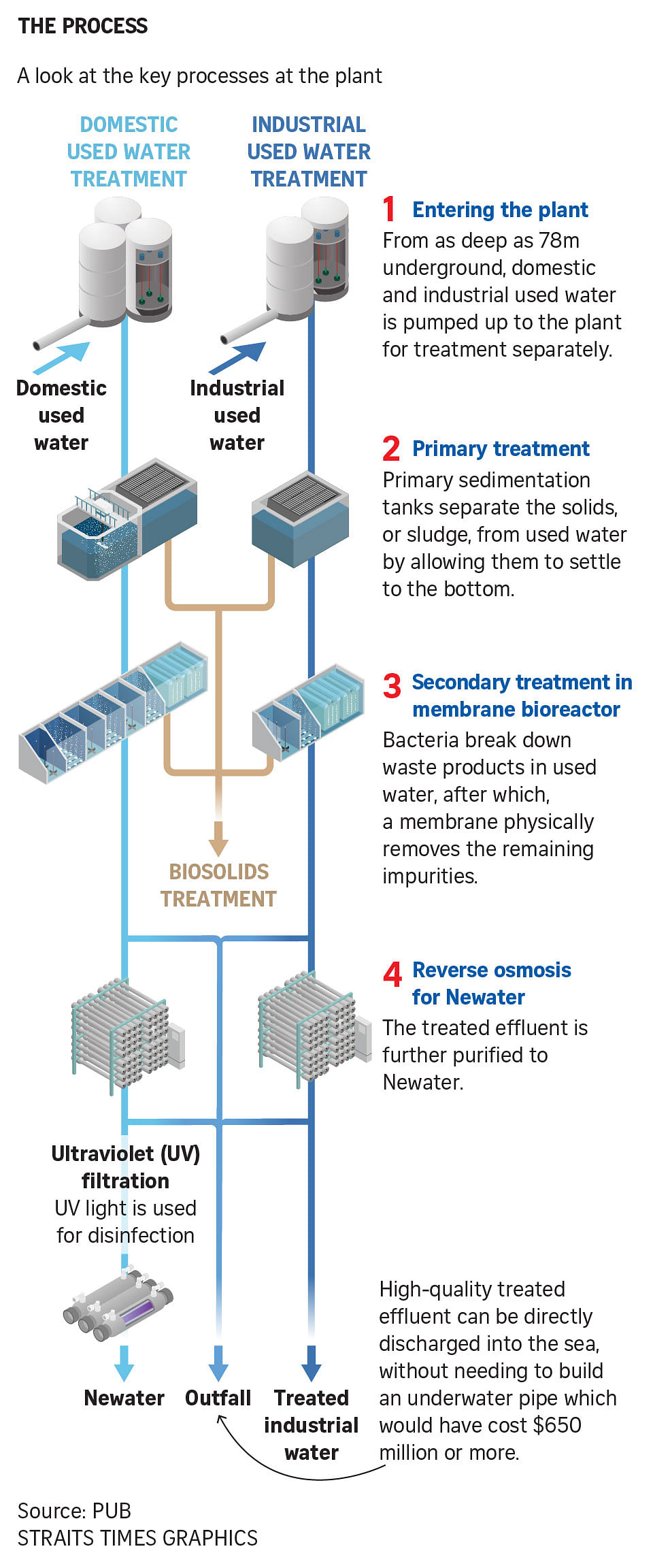
Biogas for electricity
- Sludge is treated at a biosolids complex, which includes 40m-tall digesters, to generate biogas.
- Pre-treated food waste at the NEA’s Integrated Waste Management Facility (IWMF) next to the Tuas plant will also be digested with the sludge to increase the biogas yield.
- The biogas produced will be combusted at the IWMF. The electricity generated will be used to power the entire Tuas Nexus, and excess will be exported to the electricity grid.
